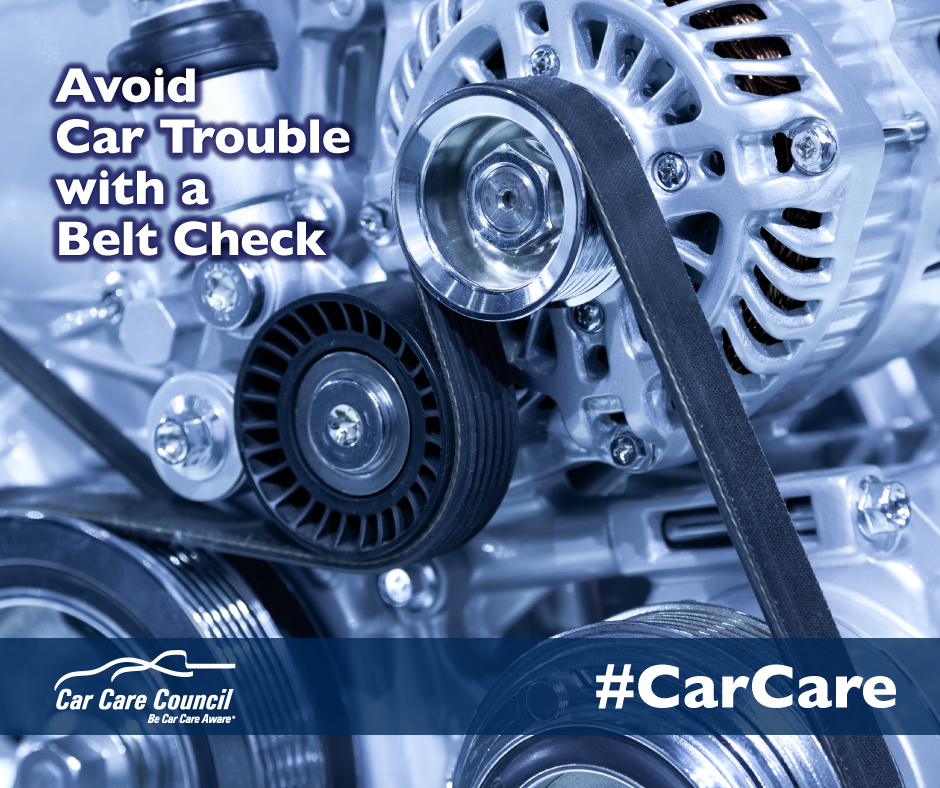
You may not see them, or know much about them, but engine belts are always working to keep your vehicle moving. Losing a belt can mean immediate trouble for the engine and a breakdown for you. To avoid being stranded, the non-profit Car Care Council recommends that motorists review the owner’s manual to ensure that belts are inspected and replaced at the proper intervals.
A vehicle’s belts are essential to the cooling, air conditioning and charging systems of the engine. Serpentine belts are used to turn the water pump, alternator, power steering and air-conditioning compressor. Older cars use V-belts for various accessories.
Always check serpentine and V-belts for looseness and their overall condition. Replace V-belts when cracked, frayed, glazed or showing signs of excessive wear. Noise in the belt system is a sign of wear and the smell of burnt rubber can indicate a slipping belt. When changing a serpentine belt, it is important to check all the components in the serpentine system as tensioners and pulleys wear at the same rate as the belt and should be inspected.
Typical serpentine belt replacement is 96,000 to 145,000 kilometers. Typical V-belt replacement is 65,000 to 80,000 kilometers. Replace timing belt per interval specified in the owner’s manual.
Why risk being stranded when a bad belt can be diagnosed with simple routine maintenance? Inspecting and replacing belts as specified in your owner’s manual will help you avoid the hassle and expense of a sudden breakdown.
The Car Care Council’s free Car Care Guide features several pages of information on the functionality of belts and when to replace them. Available in English and French, the popular guide fits easily in a glove box and can be ordered by visiting www.carcare.org/car-care-guide.
